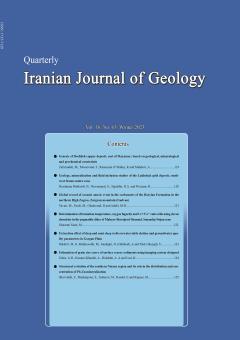-
-
List of Articles
-
Open Access Article
1 - Genesis of Dochileh copper deposit, east of Mayamey; based on geological, mineralogical and geochemical constraints
Mahboobeh Zafarzadeh F. Mousivand Ramzan Ramzani Umali Amir Mahdavi -
Open Access Article
2 - Geology, mineralization and fluid inclusion studies of the Lakhshak gold deposit, southwest Sistan suture zone
N. Heydarian Dehkordi S. Niroomand Hossein Ali Tajeddin Reza نوزعیم -
Open Access Article
3 - Global record of oceanic anoxic event in the carbonates of the Daryian Formation in the northern High Zagros, Zargran mountain (Gadvan)
Mazaher Yavari M. Yazdi Hormoz Ghalavand Mohammad Hossein Adabi -
Open Access Article
4 - Determination of formation temperature, oxygen fugacity and Ce4+/Ce3+ ratio with using zircon chemistry in the pegmatitic dikes of Malayer-Boroujerd-Shazand, Sanandaj-Sirjan zone
Majid Ghasemi siani -
Open Access Article
5 - Extraction effect of deep and semi-deep wells on water table decline and groundwater qaulity parameters in Gorgan Plain
M. Pakdel M. G.Mahmoodlu N. Jandaghi A. Fathabadi Y. Nick Ghojogh -
Open Access Article
6 - Estimation of grain size curve of surface coarse sediments using imaging system designed
A.H. Tabee A. Karami – Khaniki A.A. Bidokhti K. Lari -
Open Access Article
7 - Structural evolution of the southern Natanz region and its role in the distribution and concentration of Pb-Zn mineralization
Firouzeh Shavvakhi Saeed Madanipour M. Tadayon Ebrahim Rastad M.J. Kupaei
-
The rights to this website are owned by the Raimag Press Management System.
Copyright © 2017-2026







